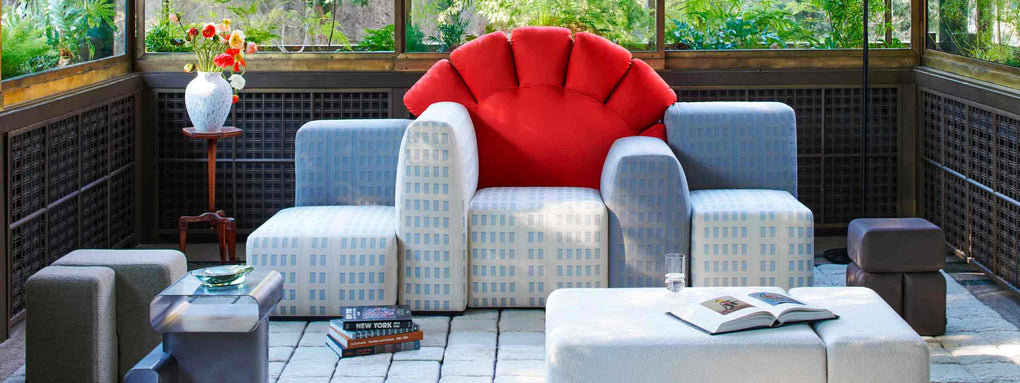Amleto Picerno interviewed by Cristina Morozzi
Read the interview with Amleto Picerno Ceraso, co-founder of Medaarch, an innovative company specialized in the production of furniture through digital fabrication techniques and computational design.
Italian design company Medaarch was founded in 2007 by engineer Gianpiero Picerno Ceraso, architect Amleto Picerno Ceraso, and marketing and communications expert Francesca Luciano. Located in Cava dei Tirreni, it’s the first digital fabrication workshop in southern Italy and it’s equipped for digital fabrication and prototyping. Also a technology and training hub, its goal is that of relaunching the art of handicrafts through digital and new technologies, and it uses biofabrication to create furniture designs.
In 2021, Medaarch was part of the 3rd annual innovative design fair EDIT in Naples with its Mediterranea collection, a line of 3D-printed furniture and accessories. Also in 2021, it illuminated for the third time the famous Via del Corso shopping street in Rome at Christmas with a fiber optic installation.
C.M.
Tell us about the original concept behind Medaarch.
A.P.
My experiences outside Italy, the course I took in Barcelona at the IAAC (Institute for Advanced Architecture of Catalonia), and my time at the Worcester Polytechnic Institute in Boston inspired me to experiment with new technologies in architecture and encouraged me to transfer these technologies to the manufacturing sector.
C.M.
The word “manufacturing” indicates a manual component. Doesn’t that create a conflict with digital processes? Does the concept of digital craftsmanship make sense, or is it a contradiction?
A.P.
Digital production is a tool and should be known and used as such. We need to break down the barriers between technique and practice, and we need to learn how to be sensitive to materials when using them. I believe that new tools can also be used to respond to classic needs, operating in the context of a circular economy, using biodegradable and environmentally friendly materials. At Medaarch, we’ve taken a further step, using digital technology not only for prototyping but also for production.
C.M.
Is Medaarch’s reference to the Mediterranean geographical or also cultural?
A.P.
For me, the Mediterranean is a model of hybridization and knowledge, especially in southern Italy, which was dominated by Arab-Norman culture. Medaarch creates a hybridization of classical culture and advanced technology while maintaining the colors and sensations of its geographical origins. Nature is a complex system: just think of the organization of a beehive. Computational design (using digital technology to generate complex shapes) and 3D printing can simulate the processes of nature.
C.M.
Who designs Medaarch’s products?
A.P.
I have a background in architecture and design and I collaborate with other designers to create projects that are compatible with digital technologies, respecting the nature of the materials we use. I believe in the generative aspect of projects, and I believe that materials are made for the forms that are most appropriate for them.
C.M.
How would you define the style of your collections?
A.P.
Post-digital, or generated by a conscious approach that aims to integrate aesthetics with ethics, using advanced techniques without modifying the essential nature of materials. The features of the materials we use guide us in creating the forms of our designs. Our aim is to arouse wonder, because in today’s world, it’s no longer just manual skill but technology that enables wonder. Our 12-piece Mediterranea collection from September 2021, for example, features multicolor combinations and polychrome streaks.
C.M.
How would you define Medaarch overall?
A.P.
I would say that Medaarch is a modern Renaissance workshop.
Cristina Morozzi





